500 - 400 BCE
Persian Rule of Israel,
539-332 BCE
After the Cyrus Edict, and the return to Zion, the Jewish people were split between Israel and Babylon. Only 42,300 Jews returned from Babylon, about 10% of the Jewish population. After finishing rebuilding the Temple in Jerusalem, the Jews in Israel continued to face hostile resistance from the Samarians while rebuilding their lives. Meanwhile, hostility against the Jews reared its head in Babylon. The Babylonian Jews were about to face total annihilation driven by the anti-Semitic rhetoric from their ancient enemy, Amalek. A significant schism in dating occurs in this time period driving two schools of thought. The academic world adds many Persian kings in succession, whereas the Jewish and Biblical accounts only name a few in a shorter period of time. This causes a discrepancy called the missing 164-years and changes the dating order of certain events. Followers of the Biblical narrative might find it challenging to reconcile the academic dating with the Biblical narrative. This site follows the academic dating but does not in so doing disregard the Biblical dating account.
Frieze from Darius I (r. 522–486 BCE) Palace at Susa (Shushan) The Louvre, Paris, Photo by Ardon Bar-Hama
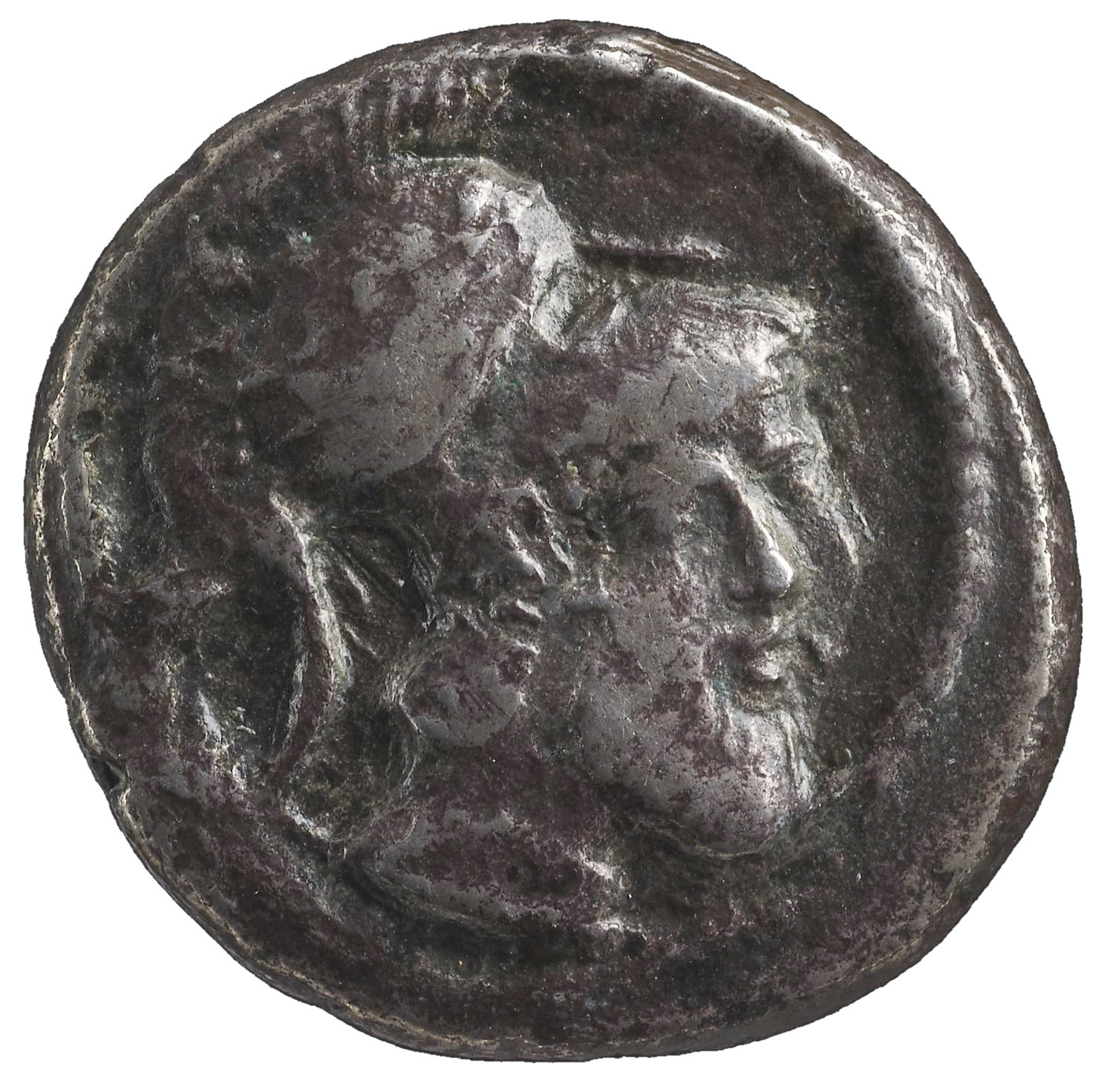

Collection of David Jesselson
Israel Is Known As the Persian Province "Yehud Medinata" meaning
"The State of Judea"
Persian Period Shekel, Late 5th Century BCE
A helmeted profile adorns the front this Persian period coin, while the reverse features a bearded divinity seated on a winged wheel, extending its hand to support a falcon, with letters in Aramaic script: YHD, "Yehud," written near the head.
Israel was known as the Persian province "Yehud Medinata" meaning "the State of Judea". Pictured here is a Persian Period Shekel from the late 5th Century BCE. A helmeted profile adorns the front while the reverse features a bearded divinity figure seated on a winged wheel extending its hand to support a falcon, with letters in Aramaic script: "Yehud," written near the head.
“Jerusalem” Pentagram from the
Period of Persian Rule of Israel
In the Persian period, the official seal of the Persian Province of Judah contained a five-pointed star with the word “Jerusalem” spelled with five Hebrew consonants, YRSLM. One letter is stamped between each point of the star.
In this picture is a clay seal dating to the Persian period. The official seal of the Persian Province of Judah contained a five-pointed star with the word “Jerusalem” spelled with five Hebrew consonants, Yud Reish Shin Lamed Mem. One letter is stamped between each point of the star.
Efrat Bocher and Oded Lipschits
Two Persian Seal Impressions of a Lion
The lion was seen in ancient Persia a symbol of royalty, power and heroic triumph. A lion can be seen among the reliefs carved on the walls of Darius' palace at Persepolis. A large group of official seal impressions on jar handles were excavated in Jerusalem dating from the time when Judea was a Persian province known as Yehud Medinata.
Pictured here are Persian seal impressions of lions on two jar handles. The lion was seen in ancient Persia as a symbol of royalty, power, and heroic triumph. A lion can be seen among the reliefs carved on the walls of Darius' palace at Persepolis. A large group of official seal impressions on jar handles were excavated in Jerusalem dating from the time when Judea was a Persian province known as Yehud Medinata.
Israel Antiquities Authority, Photo by Gabi Laron
Persian King Xerxes (Biblical Ahasuerus), r.486-465 BCE
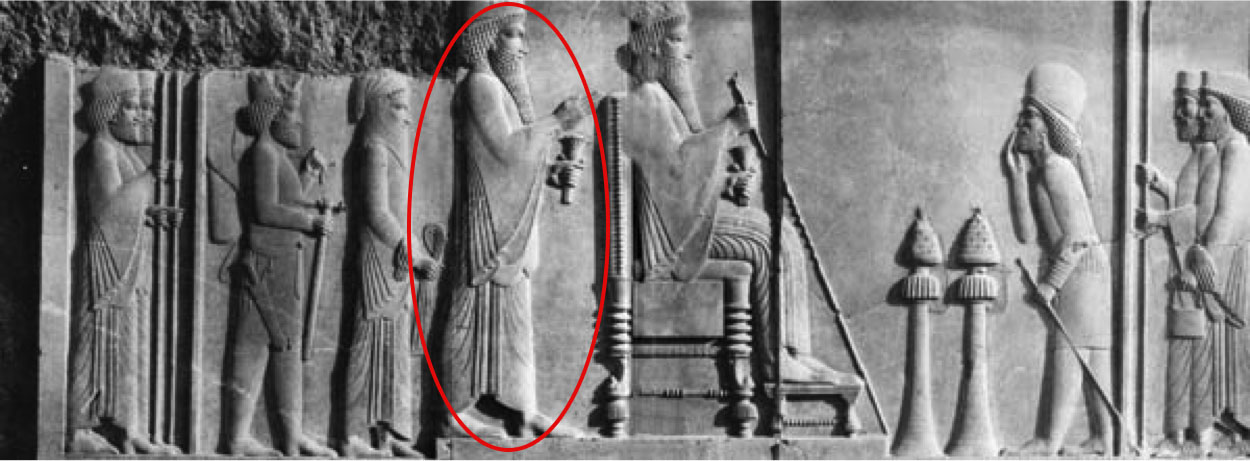
Back in Persia Cyrus was succeeded by his son Cambyses II, followed by a second son Bardiya who was murdered by his cousin Darius I. Darius married Atossa, Cyrus’ daughter. Their son was allegedly Xerxes, better known in the Bible as Ahasuerus. Pictured here is Crown Prince Xerxes standing behind his father Darius the Great in a stone relief from the main banquet hall at the royal palace at Persepolis, Persia - today’s southwest Iran.
Crown prince Xerxes, known in the Book of Esther as King Ahasuerus, stands behind his father Darius The Great in a stone relief from the main banquet hall at the royal palace at Persepolis, Persia.

Israel Museum / Israel Antiquities Authority, Photo by Abraham Hay
Persian Wine Set
Esther 1:1-7 (paraphrased)
It happened in the days of
Ahasuerus (i.e. Xerxes)… In
the third year of his reign… the king gave a banquet for seven days in the
fortress of Susa… Royal wine was served in
abundance, as befits a king, in golden beakers, beakers of varied design.
Like Belshazzar, King Ahasuerus took the Jewish Temple vessels and hosted a banquet for the people. During the banquet, the King's wife Vashti refuses to appear in public and she is exiled from the Palace. After a nationwide search, a young Jewish girl, Esther, is chosen to be the new queen consort. You are looking at an ancient Persian wine set displayed in the Israel Museum. Esther 1:7 Royal wine was served in abundance, as befits a king, in golden beakers, beakers of varied designs.
Purim
Esther 6:11
So Haman
took the robe and the horse, and arrayed Mordecai, and led him on horseback
through the city square, and proclaimed before him, “Thus it shall be done to
the man whom the king desires to honor.”
Mordechai, Esther's uncle and a highly respected member of the Jewish community, refused to bow to Haman, an Amalekite, who was gaining favor in the King's court. Haman cunningly convinced Ahasuerus to issue an edict that called for the total annihilation of all Jews. In a chain of events, the King learns that Mordechai once saved him from an assassination attempt and chose to honor him. He ironically chooses Haman to lead Mordechai through the streets to pay homage to him which brings utter humiliation upon Haman. Esther 6:11 So Haman took the robe and the horse, and arrayed Mordecai, and led him on horseback through the city square, and proclaimed before him, “Thus it shall be done to the man whom the king desires to honor.”

The Triumph of Mordecai by Rembrandt depicting Mordecai on a horse being led by Haman
Collection of George Blumenthal

Ahasuerus and Haman at the Feast of Esther by Rembrandt
Pushkin Museum, Moscow
Persian King Xerxes (Ahasuerus) and Queen Esther, 483 BCE
Esther 7:3
Then Queen Esther answered and said, “If I have found favor
in your sight, O king, and if it please the king, let my life be given me as my
petition, and my people as my request;
Josephus, Antiquities 11.6.13
“Mordecai
also wrote to the Jews…to observe these days, and celebrate them as festivals;
… the Jews still keep the aforementioned days, and call them days of
Purim.”
Immediately afterward, Haman joined the King for a second banquet by invitation of Queen Esther. During the banquet, the King asked Esther what she desired, even offering her up to half of his kingdom. Esther 7:3 Then Queen Esther answered and said, “If I have found favor in your sight, O king, and if it please the king, let my life be given me as my petition, and my people as my request; Esther reveals her Jewish identity and exposes Haman's plan to annihilate the Jews. The furious king orders Haman to hang on the very gallows he himself prepared for Mordechai. Ahasuerus issues a counter edict allowing the Jews to defend themselves. On the appointed day of the edict, the Jews obtain a great victory over their enemies. To this day the Jews annually celebrate it as the festival of Purim. Josephus, Antiquities 11.6.13 “Mordecai also wrote to the Jews…to observe these days, and celebrate them as festivals; … the Jews still keep the aforementioned days, and call them days of Purim.”
The Movie "300," 2006
Xerxes Battles the Spartans at Thermopylae, 480 BCE
Daniel 11:2
And now I will tell you the truth: Persia will have three more kings, and the fourth will be wealthier than them all; by the power he obtains through his wealth, he will stir everyone up against the kingdom of Greece.
The Battle of Thermopylae in 480 BCE was fought between the invading Persian armies of Xerxes I and an alliance of Greek city-states led by Leonidas I and his 300 Spartans.
The battles between the Greeks and the Persians spanned 50 years (490-440 BCE).
On the world stage, Xerxes continues the war of his father Darius to gain territory by invading Europe through Greece, but is met with fierce resistance. In the famous war at Thermopylae, 480 BCE, the invading Persian armies of Xerxes battled an alliance of Greek city-states led by Leonidas and his 300 Spartans. Daniel 11:2 And now I will tell you the truth: Persia will have three more kings, and the fourth will be wealthier than them all; by the power he obtains through his wealth, he will stir everyone up against the kingdom of Greece. The battles between the Greeks and the Persians spanned 50 years from 490-440 BCE.
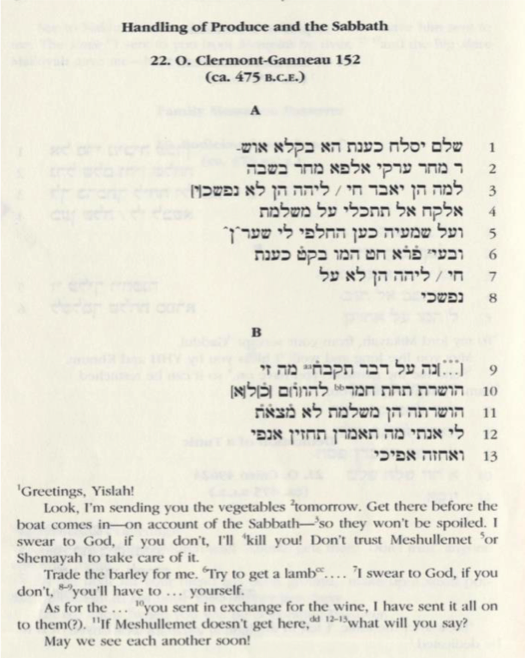
The Second Earliest Reference to the Sabbath outside of the Bible, from the Jews Living in Egypt, 475 BCE
Exodus 20:7
Remember the Sabbath day by keeping it holy.
Sabbath Ostraca from Elephantine, Egypt:
“Get there before the boat comes in—on account of the Sabbath…”
An Ostraca with Aramaic inscription was found in Elephantine, Egypt where a long-established Jewish colony lived. The area at the time was under Persian control since its capture by Cambyses in 525 BCE. The Ostraca is the second earliest reference to Shabbat observance. Exodus 20:7-9 Remember the Sabbath day by keeping it holy. Six days you shall labor and do all your work, but the seventh day is a Sabbath to the L-rd your G-d, you shall not do any work. In the Ostraca the recipient is urged: “Get there before the boat comes in—on account of the Sabbath…”
O. Clermont-Ganneau
Nehemiah, Cup Bearer to the King, 445 BCE
Nehemiah 1:11, 2:1
I was the king’s cupbearer at the time.
In the twentieth year of King Artaxerxes (Artaxerxes I, Son of Xerxes/Ahasuerus), when wine was set before him, I (Nehemiah) took the wine and gave it to the king.…
Nehemiah, the cup bearer to King Artaxerxes in Babylon, received distressing news that the Samaritans in the area had been enraged by the completion of the Temple and had descended on Jerusalem, destroying the walls and ransacking the city. Nehemiah 1:11, 2:1 I was the king’s cupbearer at the time. In the twentieth year of King Artaxerxes (Son of Xerxes), when wine was set before him, I (Nehemiah) took the wine and gave it to the king.… Pictured here is a Rhyton, or wine cup from the Persian Period.
Persian Wine Cup (Rhyton)
Israel Museum / Israel Antiquities Authority Photo by David Harris
Inscription of "Artaxerxes, the King"
Kelsey Museum of Archaeology
Nehemiah Asks King Artaxerxes for Permission to Rebuild the Wall of Jerusalem, 445 BCE
Nehemiah 2:1-5
In the twentieth year of King Artaxerxes (Artaxerxes I, Son of Xerxes/Ahasuerus)…
The king said to me, “What is your request?” With a prayer to the G-d of Heaven, I answered the king, “If it pleases the king, and if your servant has found favor in your sight, I ask that you send me to Judah, to the city where my fathers are buried, so that I may rebuild it.”
The King noticed Nehemiah’s distress and asked about his well-being, to which Nehemiah relayed the dire situation in Jerusalem. Nehemiah 2:4-5 The king said to me, “What is your request?” With a prayer to the G-d of Heaven, I answered the king, “If it pleases the king, and if your servant has found favor in your sight, I ask that you send me to Judah, to the city where my fathers are buried, so that I may rebuild it.” Pictured here is a clay inscription from an alabastron fragment reading: "Artaxerxes, the King" from the Kelsey Museum of Archaeology.
Sanballat, Governor of Samaria
Nehemiah 2:10
When Sanballat the Horonite and Tobiah the Ammonite servant heard [of Nehemiah's intention to rebuild Jerusalem], it displeased them greatly that someone had come, intent on improving the condition of the Israelites.
Elephantine (Egypt) Temple Papyrus, 407 BCE
"Moreover, all the news we have sent in one letter in our name to Delayah and Shelemyah, the sons of Sanballat, governor of Samaria."
The Samarians, headed by Sanballat, governor of Samaria, were greatly vexed when they heard that Nehemiah and the Jews were attempting to rebuild the walls. Nehemiah 2:10 When Sanballat the Horonite and Tobiah the Ammonite servant heard [of Nehemiah's intention to rebuild Jerusalem], it displeased them greatly that a man had come, asking for the welfare of the children of Israel. The Elephantine Temple Papyrus, circa 407 BCE mentions Sanballat: "Moreover, all the news we have sent in one letter in our name to Delayah and Shelemyah, the sons of Sanballat, governor of Samaria." Pictured here is the bulla or seal impression of "Sanballat, Governor of Samaria"
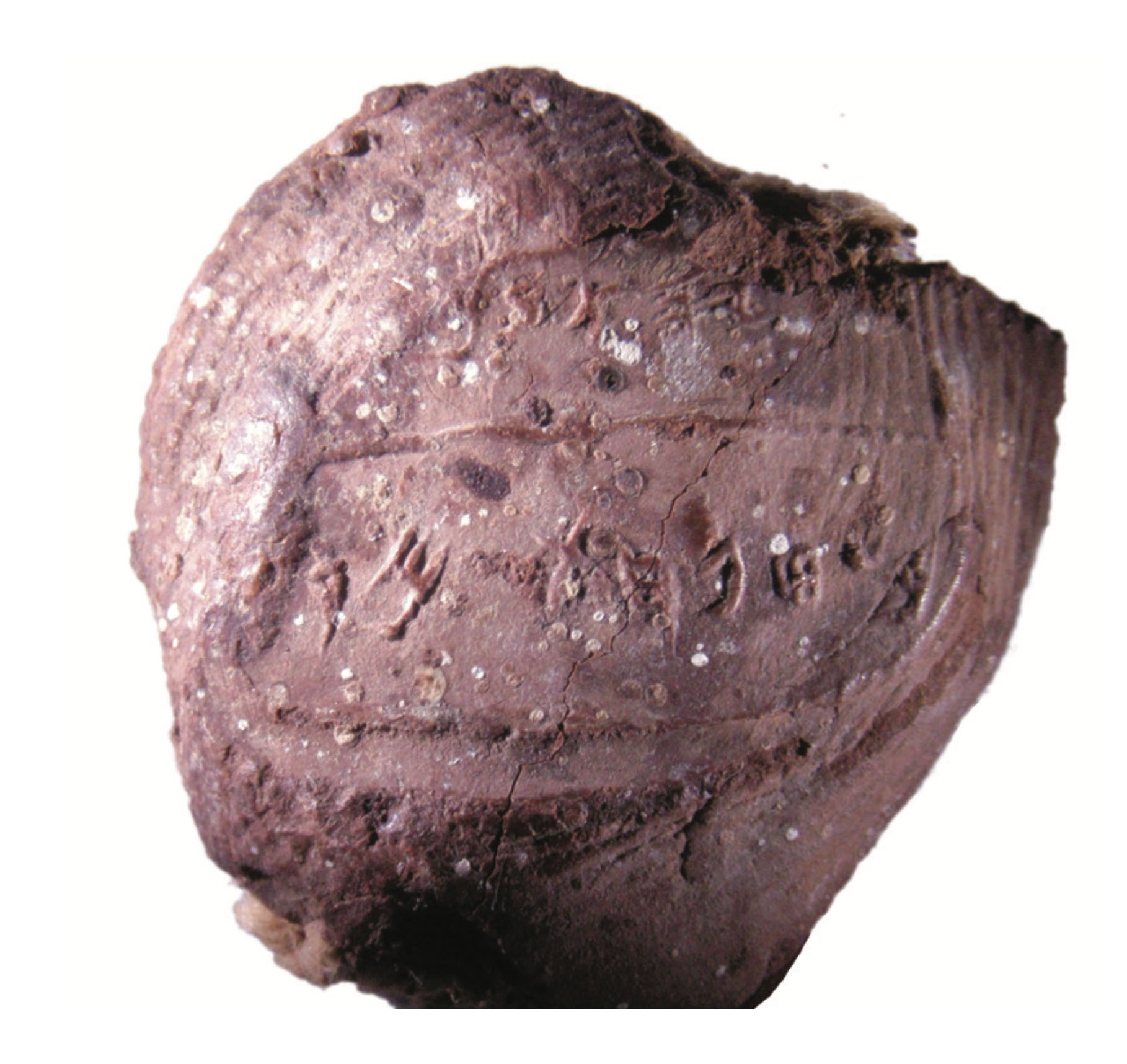
Bulla of "Sanballat, Governor of Samaria"
Israel Antiquities Authority, Photo by Yuval Goren
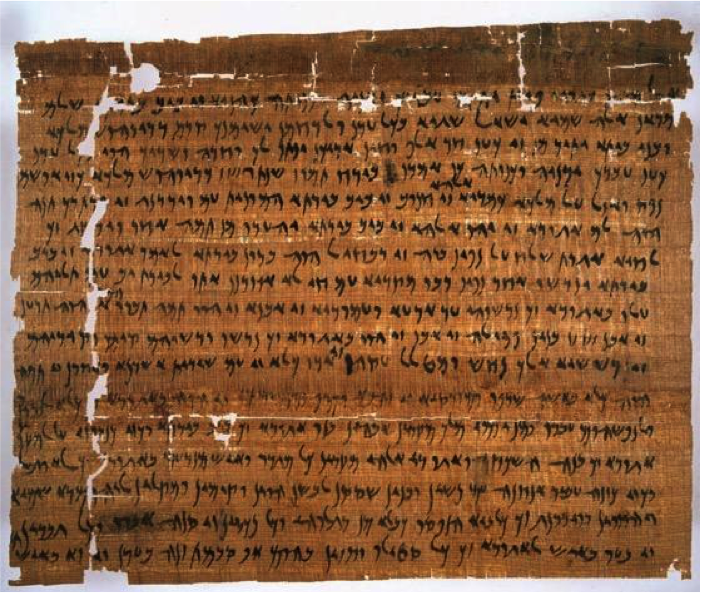
Elephantine Temple Papyrus, The Pergamon Museum, Berlin
Photo by Bruce and Kenneth Zuckerman, USC West Semitic Research Project
Cave of the Tobiads in Amman, Jordan
Nehemiah 2:19
But when… Tobiah the Ammonite official, and Geshem the Arab heard about this (Nehemiah’s plan to reconstruct the of the Wall of Jerusalem), they mocked us and ridiculed us…
One of Sanballat's co-conspirators was Tobiah the Ammonite. In this picture is the burial cave of the Tobiads family in Amman, Jordan with the name "Toviah" inscribed on it. Nehemiah 2:19 But when… Tobiah the Ammonite official, and Geshem the Arab heard about this they mocked us and ridiculed us…
Biblical Archaeology Society
Nehemiah’s Wall Found at the City of David
Nehemiah 4:10-12
From that day on, half my servants did work and half held lances and shields, bows and armor. And the officers stood behind the whole house of Judah who were rebuilding the wall. The basket-carriers were burdened, doing work with one hand while the other held a weapon. As for the builders, each had his sword girded at his side as he was building. The trumpeter stood beside me.
City of David Excavations, Jerusalem
Israel Antiquities Authority
When the enemies and neighboring nations saw the project progressing in earnest, they organized attacks on the builders, causing the Jews to build with shovel in one hand and sword in the other. The Samarians stirred on the neighbouring nations with false accusations against the Jews and even tried to assassinate Nehemiah. Nehemiah 4:10-12 From that day on, half my servants did work and half held lances and shields, bows and armor. And the officers stood behind the whole house of Judah who were rebuilding the wall. The basket-carriers were burdened, doing work with one hand while the other held a weapon. As for the builders, each had his sword girded at his side as he was building. The trumpeter stood beside me. Higher up the hill of the original wall in the City of David, archaeologists uncovered a section of a wall and tower dating back to the Persian period, most likely belonging to the wall Nehemiah built.
Biblical Archaeology Society
Nehemiah's Wall Is Built in 444 BCE, In 52 Days by 41 Teams
Nehemiah 6:15-16
So the wall was completed in fifty-two days, on the twenty-fifth of Elul. When all our enemies heard about this, all the surrounding nations were afraid and disheartened, for they realized that this task had been accomplished by our G-d.
Despite heavy physical and political resistance, the Jews pressed forward with 41 teams building unceasingly. The wall was completed in 52 days, finishing on the twenty-fifth of Elul in the year 444 BCE. Nehemiah 6:15 And so the wall was completed in fifty-two days, on the twenty-fifth of Elul. When all our enemies heard about this, all the surrounding nations were afraid and disheartened, for they realized that this task had been accomplished by our G-d.
Nehemiah Travels From Shushan, Persia
to Rebuild the Wall of Jerusalem
Nehemiah 2:17
“Come, let us rebuild the wall of Jerusalem…”
City of David Megalim Institute, Courtesy of George Blumenthal and the Gol Family
Watch a summary of the story of Nehemiah and the rebuilding of the wall by the Megallim Institute, courtesy of George Blumenthal and the Gol Family.
The Jewish Community of Elephantine, Egypt
The Jewish community served as mercenaries for the Persians on the Island of Elephantine, then called Yeb, which is located near the Aswan Dam in Egypt. 175 documents dating to 5th Century BCE were found at Elephantine.
Several hundred Aramaic papyri and ostraca dating back to the 5th century BCE were discovered in Elephantine between 1893 and 1910. The documents reveal a presence of a Jewish military colony on the Island of Elephantine serving as mercenaries for the Persians. The Island, then called Yeb, is located near the Aswan Dam in Egypt. According to the content of the documents the community was established long before Persian rule.

Elephantine, Egypt, Alamy Stock Photo
The First Reference to the Celebration of Passover Outside of the Bible, 419 BCE
Passover Letter s ent from Jerusalem to Elephantine, Egypt
"In the month of Nisan, let there be a Passover for the Judahite garrison. Now accordingly count fourteen days of the month Nisan and keep the Passover, and from the 15th day to the 21st day of Nisan are seven days of Unleavened Bread. Be clean and take heed. Do not work… Let this be done as King Darius (II) commanded."
 Pergamon Museum
Pergamon Museum
One of the Papyri, circa 419 BCE, is a letter sent from Jerusalem to Elephantine outlining Passover rituals. It is the oldest extra-Biblical text referencing Passover. "And now, this year, year 5 of King Darius, it has been sent from the king to Arsa[mes ……… …]In the month of Nisan, let there be a Passover for the Judahite garrison. Now accordingly count fourteen days of the month Nisan and keep the Passover, and from the 15th day to the 21st day of Nisan are seven days of Unleavened Bread. Be clean and take heed. Do not work…

Elephantine Temple Papyrus, The Pergamon Museum, Berlin
Photo by Bruce and Kenneth Zuckerman, USC West Semitic Research Project
A Request to the Persian Governor Bagohi and the High Priest in Jerusalem, Jehohanan, to Rebuild the Jewish Temple at Elephantine, 407 BCE
Elephantine Temple Papyrus
“To Bagohi governor of Judah from the priests who are in Elephantine the fortress...on year 14 of King Darius II (410 BCE)... Cambyses (525 BCE) destroyed the Egyptian temples but not the Y-H-V-H temple. We seek permission from Jehohanan the High Priest in Jerusalem to rebuild the temple as it was formerly built..."
The Elephantine Temple Papyrus is a letter written in 407 BCE to Bagohi, the Persian governor of Judea, appealing for assistance in rebuilding the Jewish temple in Elephantine, which had recently been badly damaged by an anti-Jewish rampage on the part of a segment of the Elephantine community.
It became evident from the Papyri collection that the Jews had their own temple in Elephantine.
The
Elephantine Temple Papyrus is a letter written in 407 BCE to Bagohi, the
Persian governor of Judea, appealing for assistance in rebuilding the Jewish
temple in Elephantine, which had recently been badly damaged by an anti-Jewish
rampage on the part of a segment of the Elephantine community.
It reads:
“The
temple of the G-d of heaven that was built at Fort Elephantine long ago, before
the time of Cambyses which ‘that criminal Vidranga’ razed in the fourteenth
year of King Darius…We seek permission from Jehohanan the High Priest in
Jerusalem to rebuild the temple as it was formerly built..."
Based on the documents, many archaeologists were in
search of the actual temple only to finally be discovered in 1967.
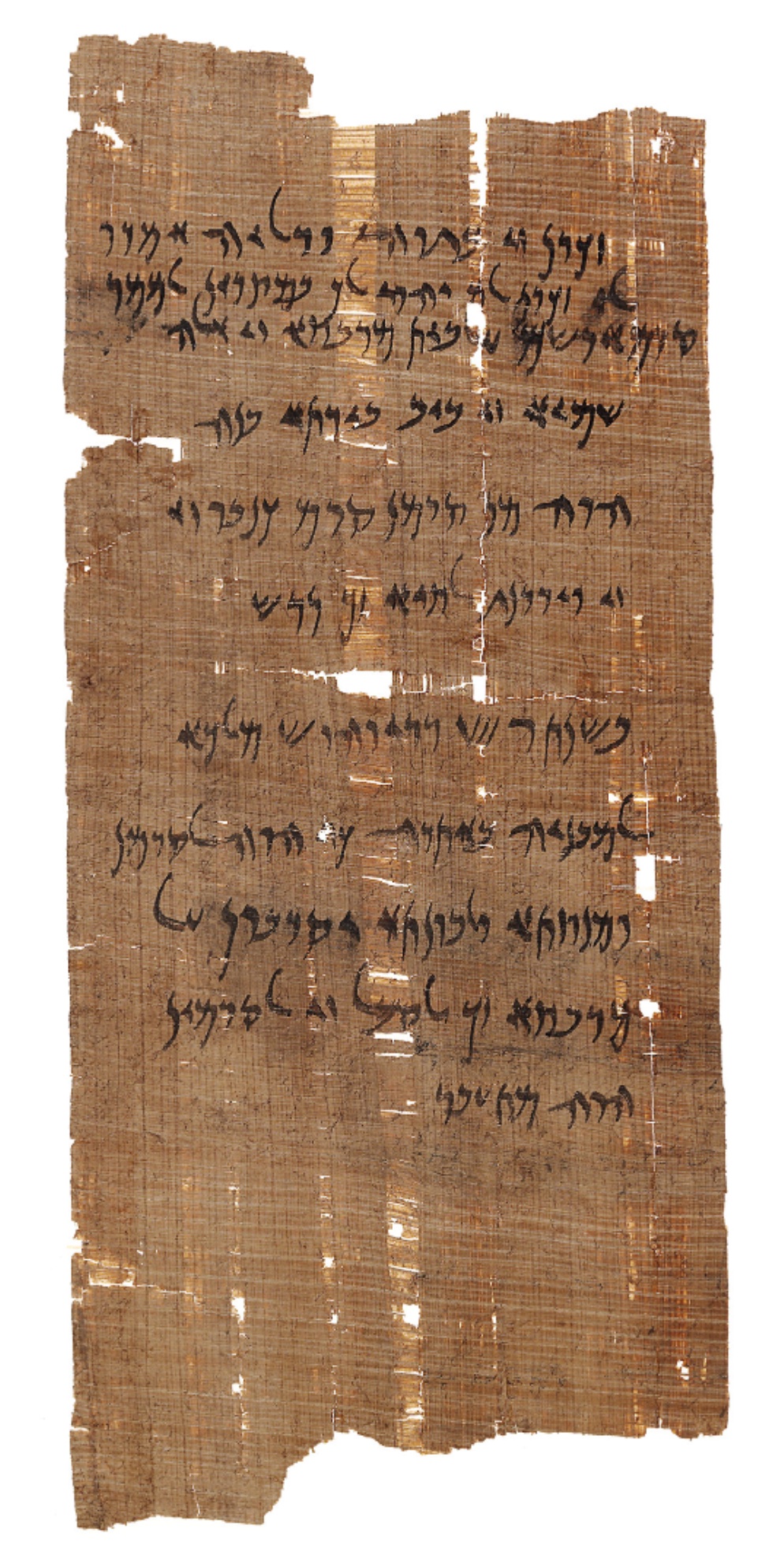
Response with permission from the Persian governor of Judea, Bagohi, to rebuild the Temple in Elephantine, after 407 BCE
Elephantine Temple Papyrus #4
"Bagohi [Governor of Judea] says: The Altar-house of the G-d (i.e. of the Jews) in Elephantine the fortress may be built as was formerly before Cambyses which Vidranga demolished in the 14th year of Darius the king (410 BCE). Let meal-offering and the incense they shall offer upon that altar just as formerly was done."
Some speculate that the Jewish Temple was destroyed about the year 390 BCE.
In response to the request to rebuild the Temple in Elephantine, Bagohi, the Persian governor of Judea replied with favor to the community. His reply can be viewed on the Elephantine Temple Papyrus #4: "Bagohi says: The Altar-house of G-d in Elephantine the fortress may be built as was formerly before Cambyses which Vidranga demolished in the 14th year of Darius the king. Let the meal-offering and the incense they shall offer upon that altar be just as formerly was done." Some speculate that the Jewish Temple was destroyed around the year 390 BCE.
Berlin State Museums, Egyptian Museum and Papyrus Collection
Photo by Sandra Steiss
Penn Museum, Philadelphia
The Murashu Archive
In 1893, an archive of clay tablets was discovered by archaeologists from the University of Pennsylvania in the ancient city of Nippur, located in present day Iraq. The tablets documented the business of the Murashu family in the 5th Century BCE. Uniquely, the documents contain a large number of Jewish names, evidencing the existence of Jewish communities in Nippur, which is not found prior to the Babylonian Exile of 586 BCE.
In 1893, an archive of clay tablets was discovered by archaeologists from the University of Pennsylvania in the ancient city of Nippur, located in present-day Iraq. The tablets documented the business of the Murashu family, Jewish merchants in Babylonia in the 5th Century BCE. There is evidence of a considerable Jewish population in the vicinity of Nippur at the time of Ezra and Nehemiah. The Cuneiform is written in Akkadian text with comments in Aramaic.
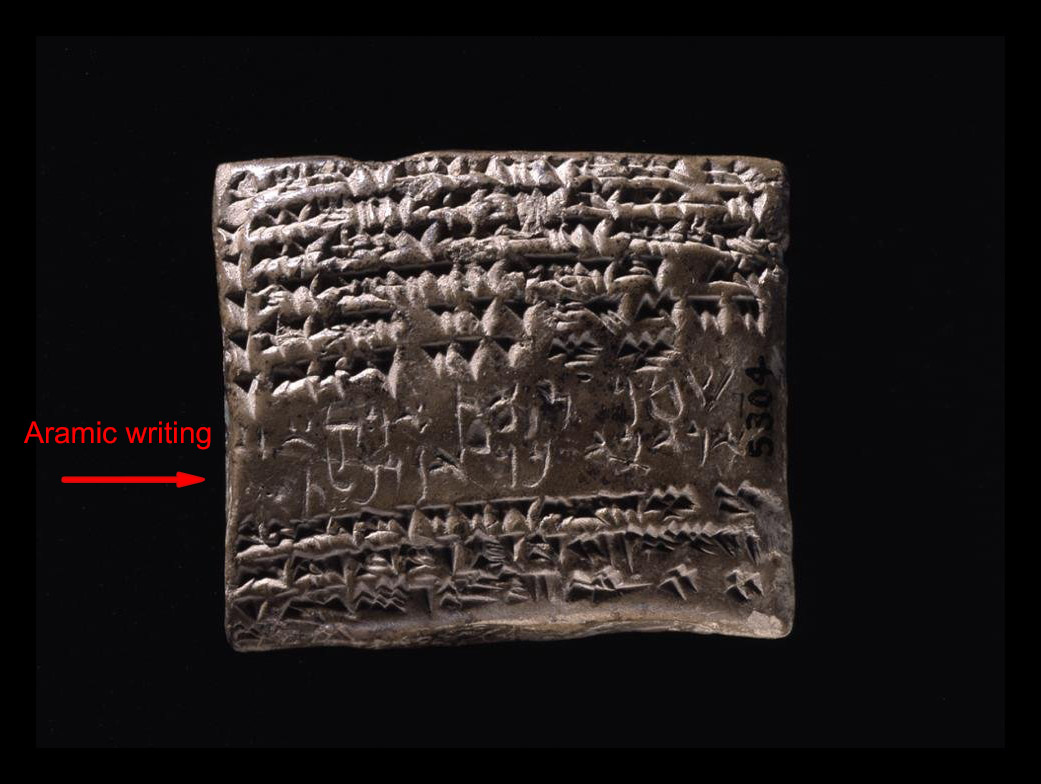
created with
WordPress Website Builder .